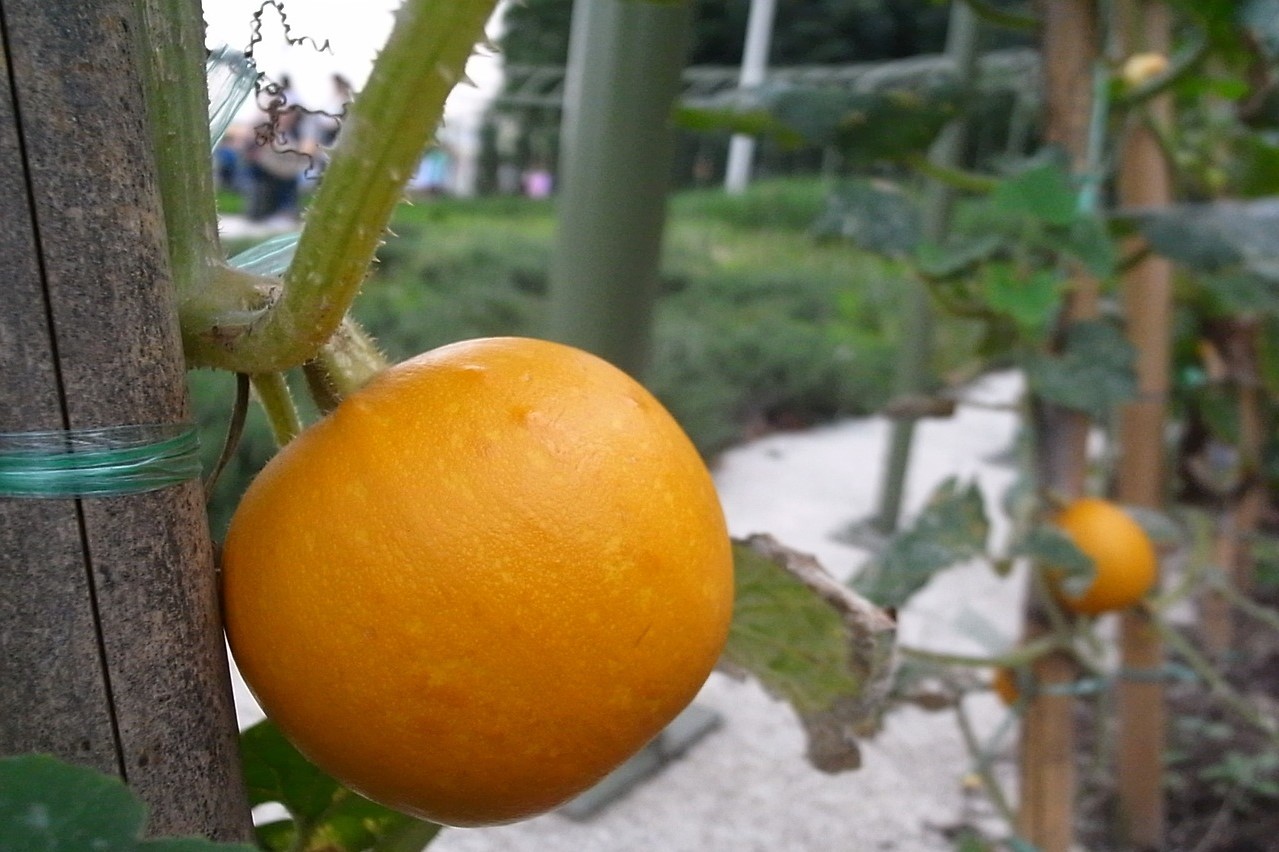Pumpkins are a popular fall fruit used for everything from decoration to food. You may have also heard someone call them gourds, and some of their relatives, like squash, are gourds. If that left you scratching your head in confusion — you aren’t alone. Plenty of people wonder, “Is a pumpkin a gourd?” We’re here to answer that question. We’ll explain what a gourd is, whether pumpkins are gourds, and talk about other fruits often called gourds, so you can go into your fall harvest feeling confident.
What is a gourd?

The word gourd can refer to two possible things. The first is any plant in the Cucurbitaceae family. Plants in this family can be called cucurbits or gourds, and the Cucurbitaceae family is sometimes called the gourd family. These plants have a few recognizable characteristics; namely vines and fruits with hard, thick skins or shells. The fruits themselves can also be called gourds. So, for example, you might call the plant Citrullus lanatus a gourd, or you could call the fruit itself (a watermelon) a gourd.
One exception to this rule is if a member of the gourd family doesn’t produce a hard-shelled fruit. A few examples are cucumbers, caigua, and bitter melon. In these cases, while you can refer to the fruits as gourds (since the plants are in the gourd family), people typically do not.
Is a pumpkin a gourd?

Yes, pumpkins are gourds in both senses of the word. Pumpkin plants are in the Cucurbita genus, which is part of the Cucurbitaceae family. They also have thick, hard skins or shells, which is how it’s so easy to hollow them out for use as jack-o’-lanterns. So whether you are talking about pumpkin plants, in general, or a specific pumpkin fruit, the word gourd applies.
Not only that, but pumpkins are also technically berries. Although it might seem strange, the botanical definition of a berry is different from how the word berry is used in a more casual setting. Almost all gourds are berries, and there’s actually a special term used just for them: pepo.
Are there other fruits considered gourds?

Any plant in the Cucurbitaceae family can be called a gourd, but you might not realize which plants are part of this family — or just how many there are! There are over 900 species in the gourd family. That’s too many gourds to name, so here are some of the most common ones you should be aware of.
Pumpkins we’ve already talked about, but their close relatives, squash and zucchini, are also gourds. Cucumbers are in the gourd family, although not many people refer to them as gourds due to their thinner skins. There are also melons in the same genus as cucumbers, such as cantaloupes and honeydews, which can be considered gourds. Watermelons are gourds as well. An interesting plant in this family is the luffa or loofah, which is similar to a cucumber on the outside and is, therefore, not often referred to as a gourd. This fruit, when matured and dried, can be made into a loofah sponge.
How can you identify gourds?

If you’re looking at a plant and aren’t sure if it’s a gourd, there are a few ways to determine the answer. If the plant has no fruit, then you may not be able to tell conclusively. If the plant doesn’t have vines, then it’s almost certainly not a gourd (unless you are in Yemen, in which case, you might run into the cucumber tree, Dendrosicyos socotranus). The leaves of plants in the gourd family are typically broad and flat or slightly curved, but other plants can have similarly shaped leaves.
If the plant has fruit, it is easier to identify. Even when they first begin to develop, gourds tend to look similar to their mature forms. Younger fruit may not have as thick of skin as their mature counterparts, but they do still have a similar appearance. However, we don’t recommend using this alone as an identification tool if you are foraging. Not all gourds are edible, and mistakes can have unfortunate consequences.
Now you know what to say the next time someone wonders, “Is a pumpkin a gourd?” Not only are pumpkins gourds, but so are squash, watermelons, and even loofah sponges! With your curiosity fed, now you can focus on caring for your gourds and growing a massive fall harvest. No matter the type of gourd you enjoy, they’re a fun and rewarding addition to most gardens.




